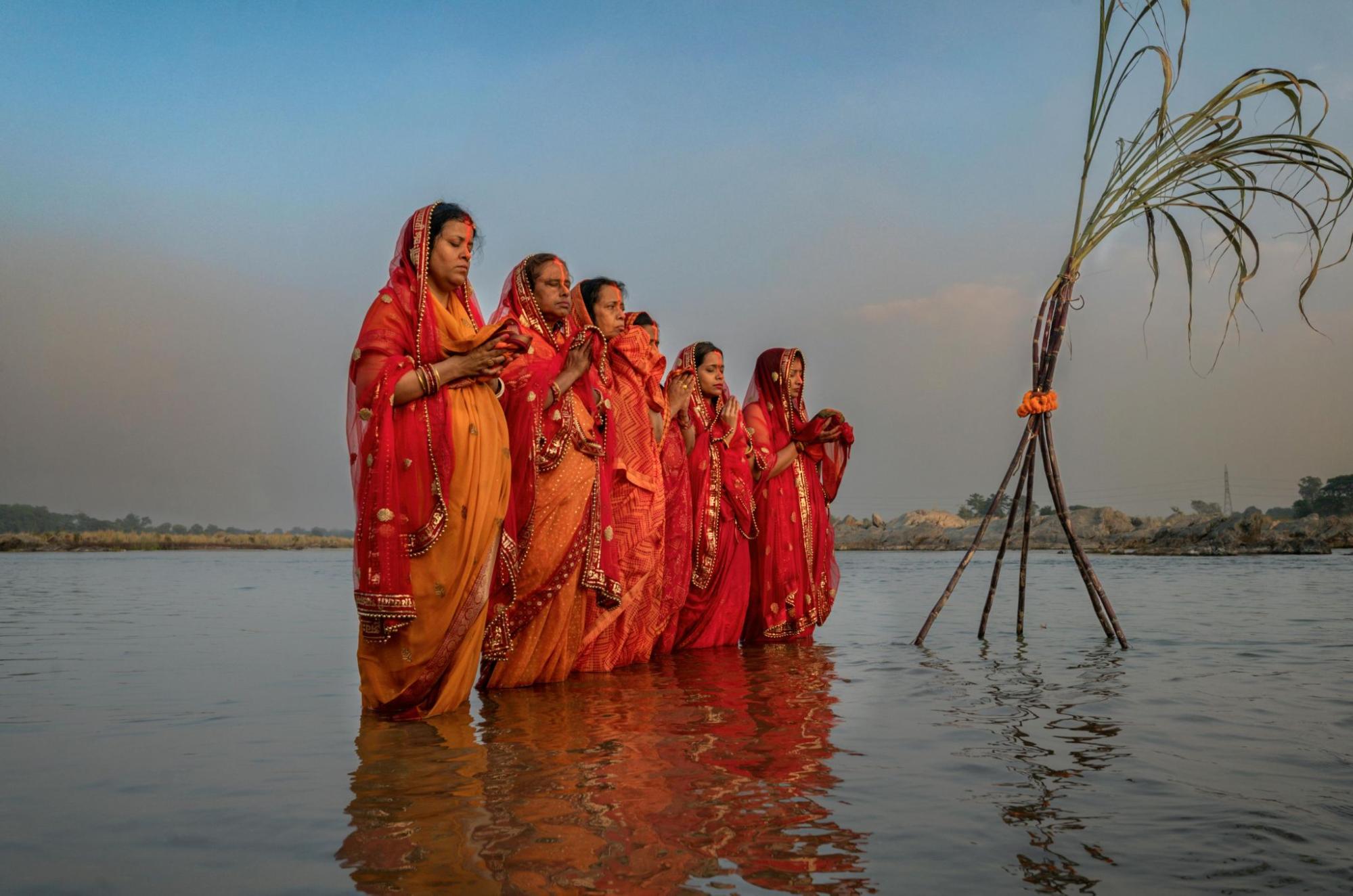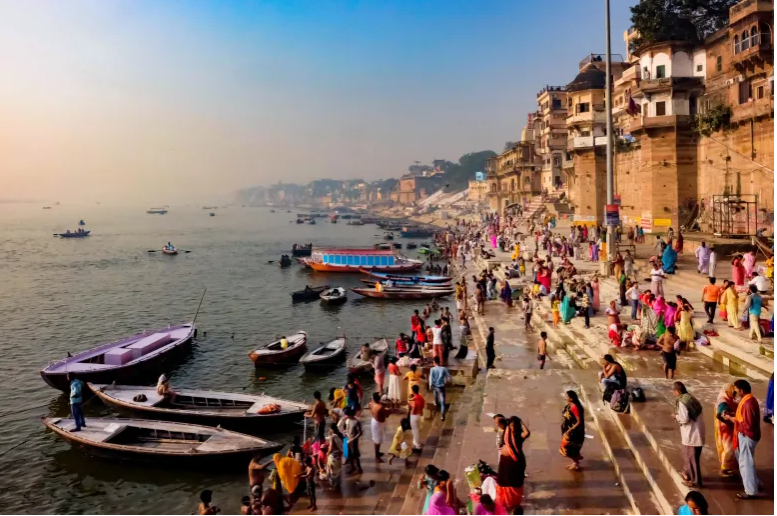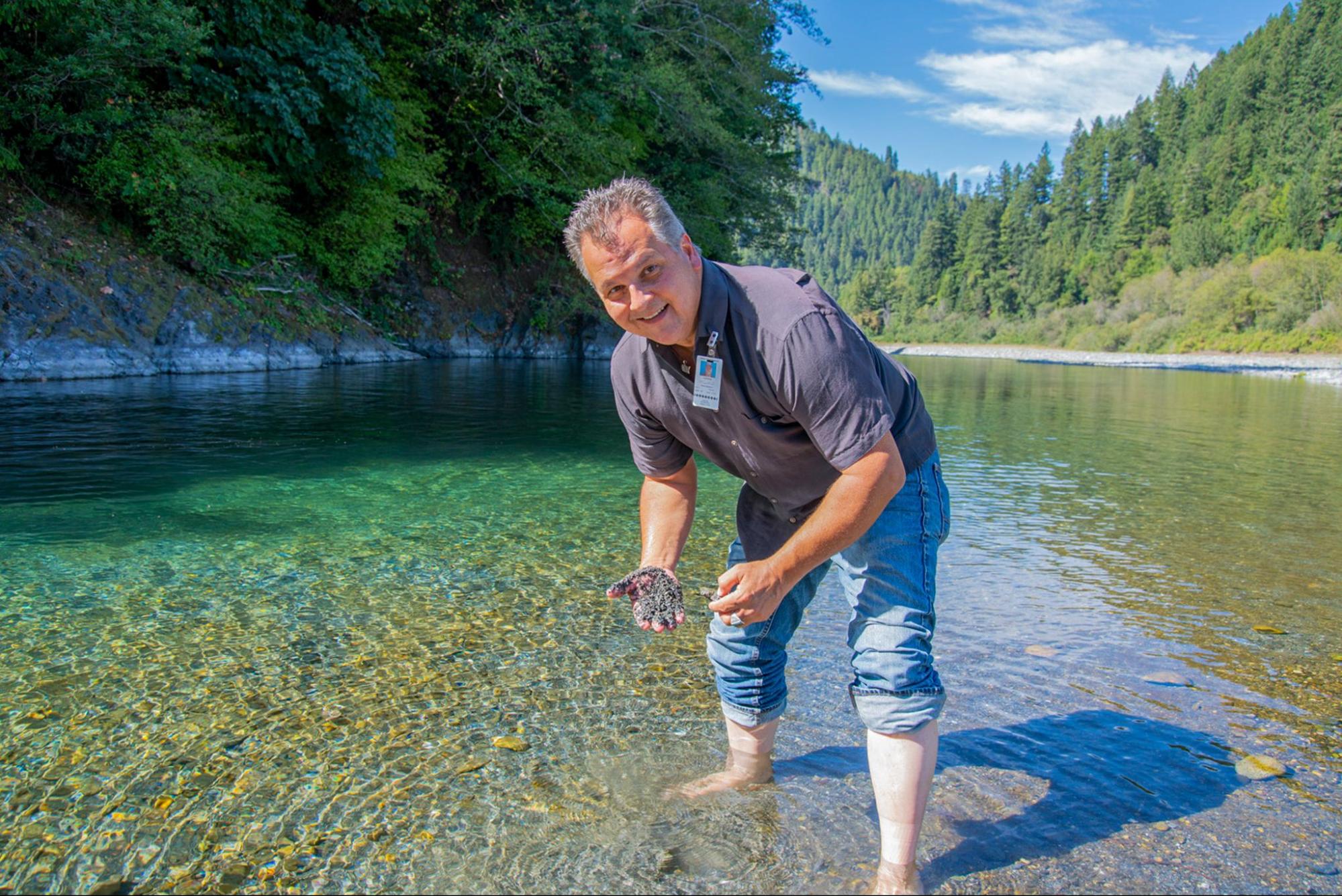9.2 Chapter Story
A BELOVED RIVER, RELIGION, AND SPIRITUALITY INSPIRE SOCIAL CHANGE
The Ganges River in India supports the lives of 400 million people who use her channel and her tributaries for water, transportation, fishing, and the removal of waste. Beyond the physical presence of the river, the waterway is sacred to Hindus. They revere her as Mother Ganga who cleanses the sins of those who see or touch her. During the festival of Kumbh Mela, millions of pilgrims travel to the Ganges so they can bathe in her water and be purified. At the end of life, people come to her banks to die. Their bodies are cremated, and the ashes are scattered in the current. Physical and spiritual life are nourished by this mighty river, an unchanging part of social existence for centuries (figure 9.1).

The 1,500-mile-long Ganges begins in the Himalayan mountains, where her water is pristine. But as she moves through the populated plains of northern India she quickly becomes polluted—by human waste, the remains of people buried there, chemical deposits from factories, and the pressures of the millions of people who live surrounding her (figure 9.2) (Scarr 2019). In 2014, the Indian government set out to restore the Ganges through one of the most ambitious engineering programs in the history of sanitation. Along with monitoring pollutants, they have been planting native trees along her watershed and supporting farmers in transitioning to sustainable farming (UN Environment Programme 2023).

But engineering and planting are only part of the cleanup. A combination of religion, spirituality, and activism plays another important role. Spiritual activists see that caring for the Ganges is a sacred obligation. They assert that the Ganges is a living entity with her own unique personhood. She has the right to flow freely, to be protected from harm (including the harm of pollution), and to maintain her unique biodiversity.
For example, the Dalai Lama, the leader of Tibetan Buddhism, and His Holiness Pujya Swami Chidanand Saraswati, leader of an interfaith ashram, were instrumental in starting the foundation Ganga Action Parivar to focus on restoring the health of the Ganges. They connect people and organizations involved in the cause, and members lobby for a National Ganga Rights Act to protect her rights.
Professor Veer Bhadra Mishra and his organization, the Sankat Mochan Foundation, have also been crucial in protecting the Ganges. Mishra, a hydraulic engineer, worked tirelessly before his death in 2013, designing ways to remove pollution from the river. He was also the mahant (leader) of the Hindu temple Sankat Mochan. Amberly Polidor, an activist filmmaker, writes:
[Mishra and the foundation] found new ways to talk about the river that respect the Hindu worldview and veneration of the Ganges.… To tell a Hindu that Ganga, goddess, and mother, is “polluted” or “dirty” is an insult; it suggests that she is no longer sacred. Rather, the approach must acknowledge that human action, not the holy river herself, is responsible: “We are allowing our mother to be defiled.”
This approach has stimulated grassroots involvement in the clean-up effort, and is transforming the work for environmental preservation into a model for cultural and religious preservation as well (Polidor 2014).
Seen through the lens of sociology, the case of the Ganges restoration work reveals how religious leadership, support of spiritual ideas, and changes in religious practices play a role in social and environmental change.
Sociologists explore patterns in belief and behavior to understand how and why society changes, and the Ganges restoration is one of many stories where spiritual principles encourage people to take social action. When we focus globally on religion, social change, and rivers, we can see more patterns. Watch the 4:06-minute video “The Novel Legal Concept to Protect Sacred Rivers” [Streaming Video] (figure 9.3) to see how religion and activism combine around the world to grant rights to rivers to protect them. As you do, consider the ways in which religious beliefs inform the debate about river rights.
In the beautiful U.S. Pacific Northwest, Indigenous Peoples are using similar approaches to protect rivers. The Yurok Tribe is working to protect the Klamath River, which flows in Southern Oregon and Northern California (figure 9.4). (Optional: Read more about the Yurok Tribe [Website].) In May 2019, the Yurok people granted the rights of personhood to the Klamath, upholding the idea that she is an entity worthy of respect, care, and protection. This belief is deeply rooted in the worldview and the spiritual practices of the Yurok people. In the words of one Tribal member:
I was born and raised on the River. My life is woven with the river and its fish and people. If the River is sick, so am I. So are we all, because it is our spirit and strength. It is not the simple fact of eating healthy food from the River that is important.… It is the knowing in my mind, heart and spirit that the River itself is whole and healthy. We are merely a reflection of the River, and will never be healthy again until it is (Yurok Tribal Member Survey Respondent 2006 in Sloan 2011:91).
The physical and spiritual health of the people and the river are intertwined. To restore health to the Klamath, the Yurok advocate for the removal of dams along the river and pay attention to the water quality of her tributaries. Work began in December 2023 to remove the first of four dams. The other three are expected to be removed by the end of 2024.

In this chapter, we will explore how globally, religion and spirituality can be powerful forces that support stability in society and energize social change. On one hand, they are forces that influence change for a better society—not just through protection of the environment but through virtually all aspects of human existence. But what about other realities? Religion also plays a role in justifying inequality and creating harm. This chapter will encourage you to ask questions about those contradictions and other aspects of religion in society.
- Who decides what is sacred?
- How do sociologists explain the role of religion and spiritual belief systems in society? How can we best acknowledge the diversity of experiences based on social location when we think about religion and spirituality?
- How can we encourage the well-being of the Earth and all humans?
Going Deeper
To learn more about the Ganges River, her pollution, and her spiritual significance, read:
- “The Race to Save the River Ganges” [Website], an interactive infographic.
- “The Ganges, Hinduism’s Holy River” [Website], a blog post about why the Ganges River is sacred.
- “Kumbh Mela” [Website], a blog post about the festival of Kumbh.
To learn more about dam removal on the Klamath River, read and watch:
- “Largest Dam Removal Project in History Nears Final Approval” [Website], an article by the Yoruk tribe that recommends the removal of the lower four Klamath River Dams.
- “Nature Undammed” [Website], an article and pictorial about the removal of the Klamath River Dams.
Licenses and Attributions for Chapter Story
Open Content, Original
“Chapter Story” by Kimberly Puttman and Aimee Samara Krouskop is licensed under CC BY-SA 4.0.
Open Content, Shared Previously
Figure 9.1. “Women in India Performing a Puja” by Kumar Kranti Prasad is licensed under the Pexels License.
Figure 9.2. “The Ganges River Flanks the Indian City of Varanasi” by Ritesh Ghosh is licensed under CC0.
Figure 9.4. “Keith Parker, Yurok Tribal Member and Biologist” by John Heil is published by the U.S. Fish and Wildlife Service and in the public domain.
All Rights Reserved Content
Figure 9.3. “The Novel Legal Concept to Protect Sacred Rivers” by Rita D. Sherma is published by The Conversation and licensed under the Standard YouTube License.
a communally organized and persistent set of beliefs, practices, and relationships that meet social needs and organizes social life.
the aspect of humanity that refers to the way individuals seek and express meaning and purpose and the way they experience their connectedness to the moment, to self, to others, to nature, and to the significant or sacred.
the way human interactions and relationships transform cultural and social institutions over time.
the institution by which a society organizes itself and allocates authority to accomplish collective goals and provide benefits that a society needs.
the extent of a person’s physical, mental, and social well-being.
a particular philosophy of life or conception of the world or universe held by an individual or group.
a science guided by the understanding that the social matters: our lives are affected, not only by our individual characteristics but by our place in the social world, not only by natural forces but by their social dimension.
the social position an individual holds within their society. It is based upon social characteristics of social class, gender, sexual orientation, ethnicity, race, and religion and other characteristics that society deems important.

